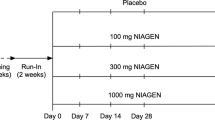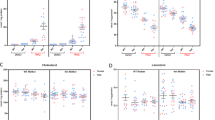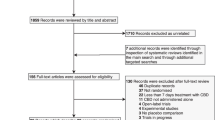Abstract
The concept of drug–nutrient interactions is not new, but it has only recently gained currency in medicine. Although the elderly are normally considered to be at particular risk, other groups may also be at risk: infants, adolescents, pregnant women, alcohol and tobacco users, etc.
In infants and adolescents there are several factors that may influence the possible interactions: firstly, nutrient needs are usually higher, mainly micronutrients; systems for detoxification of anutrients are not complete; the tendency to restricted diets (especially girls) that are unable to cover the actual recommended intakes for a number of micronutients (i.e. vitamins); and the dangerous increase in alcohol consumption either in males or females.
Administration of drugs in population with adequate vitamin intake is usually not a problem, but administration of drugs in those with borderline intake of vitamins or in patients with low nutritional status can result in symptomatic vitamin deficiency states. The groups at risk of poor vitamin status are smokers (a high proportion of adolescents are active smokers); dieters (skipping meals and dieting to lose weight frequently compromise micronutrient intake, and it should be considered that it is extremely difficult to meet all the requirements at intakes of less than 1200 calories per day), oral contraceptive users, and pregnant and lactating women, excessive alcohol users, etc. The chapter also focuses on the case of folate: rapidly dividing tissues during the adolescent growth spurt increase requirements for folate. Because of this increased need, folate status appears to be of concern during the age of this rapid growth. A variety of drugs are known to interfere with vitamin utilization by blocking or altering transformation of the vitamin to its metabolically active form. Serum folate levels are known to be low in a high percentage of patients with rheumatoid arthritis, suggesting that aspirin alters the transport of folate by competition for binding sites on serum proteins. Methotrexate, a drug commonly used at low doses for the treatment of psoriasis, rheumatoid arthritis and certain liver disorders, limits the availability of methyl groups derived from one-carbon metabolism by inhibiting competitively a key enzyme in the intracellular folate metabolism. In humans, the antiepileptic drug valproic acid (VPA) is associated with two major adverse effects: teratogenicity and folate deficiency. The mechanisms by which VPA exerts the teratogenic or antifolate effect remain unclear, but an alteration in the methionine cycle is the strongest hypothesis proposed.
European Journal of Clinical Nutrition (2000) 54, Suppl 1, S69–S74
This is a preview of subscription content, access via your institution
Access options
Subscribe to this journal
Receive 12 print issues and online access
$259.00 per year
only $21.58 per issue
Buy this article
- Purchase on Springer Link
- Instant access to full article PDF
Prices may be subject to local taxes which are calculated during checkout
Similar content being viewed by others
Author information
Authors and Affiliations
Contributions
Guarantor: G. Varela-Moreiras.
Contributors: Dr G. Varela-Moreiras initiated the study, collected the data, designed the draft and wrote the first and final version. Dr E. Alonso-Aperte contributed to the writing and revision of the manuscript.
Corresponding author
Rights and permissions
About this article
Cite this article
Alonso-Aperte, E., Varela-Moreiras, G. Drugs–nutrient interactions: a potential problem during adolescence. Eur J Clin Nutr 54 (Suppl 1), S69–S74 (2000). https://doi.org/10.1038/sj.ejcn.1600989
Published:
Issue Date:
DOI: https://doi.org/10.1038/sj.ejcn.1600989
Keywords
This article is cited by
-
Management of antiepileptic drug–induced nutrition-related adverse effects
Neurological Sciences (2020)



